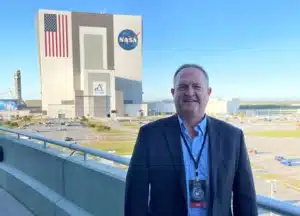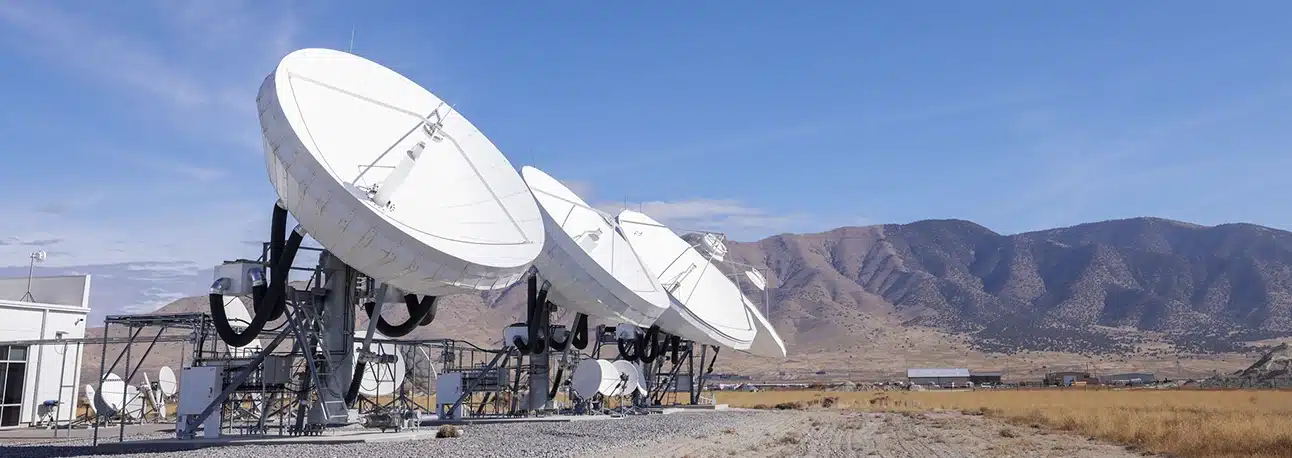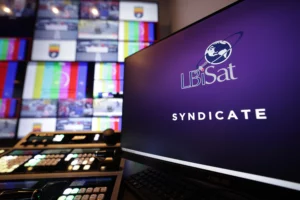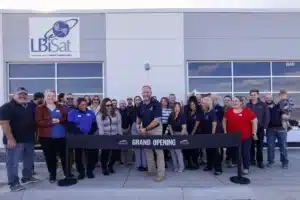ST Engineering iDirect recognizes the power of partnerships and we are proud of our many partners and their global impact on businesses and communities enabled with our technology. In this blog article, we feature LBiSat, a teleport operator and long-time ST Engineering iDirect customer based in the U.S. and their efforts of modernizing and transforming the teleport business.
Can you begin by giving us a bit of background on the company?

LBiSat is a family business, and the name Lyman Brothers dates back to the 1800s when our great grandfathers started a lumber cutting mill in southwest Utah. My cousins took over the Lyman Brother’s name in 1981 doing equipment rentals for oil fields and mining companies and the like in Idaho, Montana and Wyoming. They got into communications providing phone services and landed a big contract with the United States Agency for International Development (USAID). I was offered the opportunity to come in and help the business as General Manager. My schooling and business background is in organizational communications and human resource management.
LBiSat as we know it today really established itself in 2011. We had a little bit of divine intervention where a neighboring business to the north of us, there in South Jordan, wanted our facility, including the three acres we were located on. We agreed to move and with that capital, we established ourselves in our current location in Eagle Mountain in 2020. We now have 10 acres and a 13,500 square foot facility. We acquired funding to build the facility and a 5000 square foot data center inside of that.
Looking back over the last few decades what have been the biggest changes you have seen?
We’ve always competed with the carriers, yet they’ve always also helped us out. We are the little guy in comparison with many carriers who have deep pockets, but we occupy a niche where we provide connectivity to small businesses, such as lodges up in Alaska. We have a different type of client base. Being able to compete and stay in the game is always a challenge and it has changed a little, especially through Covid.
Our bread and butter used to be the sale of networks. We would buy space segment, we brokered time off the satellite, then we set up a network and resold it and we used to do well from this side of the business. This side of the business is changing with the advent of LEO, and providers such as Starlink. They have figured out how to do things in a less expensive way but this technology change means that we have to figure out how to compete with that. And that is a challenge.
The other challenge for us is the sale of space segment. The interest in LEO and MEO has meant that there is not as much business out there for a mainly GEO-focused company like us. This move to Eagle Mountain has been important in this respect as we have more land and we can support the LEO and MEO operators by hosting gateway services. We are looking forward to expanding this part of the business. However, LEO and MEO services are still very nascent and it will take some time for the industry to figure them out.
The second aspect of the business that we’re really pushing is production and broadcast. We have partnered with a small company out of Orem, Utah, called Syndicate. They work with many local businesses and were looking for a larger facility, so it made sense for them to become our partner and use our facility. We brought them in and showed them what we could do. We had the facility that they needed, which included backup power, data center, redundant fiber, a support system, and a sales staff. It made perfect sense. They have incredible production and broadcast expertise and the REMI control room equipment that we built in our facility. Now we can host live production and streaming media for all types of events. Some of these events consist of extreme sport, other sporting events and corporate events – whatever we might find.
How are you expanding your business offerings?
We are offering contingency services where we will help support businesses such as banks, hospitals and municipalities to provide emergency support and disaster contingency services to help them that if something were to happen and they were to lose communications. We are able to restore voice and data communications immediately. This is an important growth area for us at the moment. We’re also getting heavily involved in the Internet of Things, and there will be more to come on that.
Can you tell us more about the open house event that you recently hosted and why you decided to do it?
It was a great event. We’ve been in here for a year and a half and have been waiting for a good opportunity to do this. The facility looks amazing.
The city of Eagle Mountain has been wonderful. The city council and the mayor have helped me as I’ve been trying to buy the property, get the permits, get the building work done – they’ve been there every step of the way. The Chamber of Commerce has also been wonderful and helped us set up the grand opening. We invited local businesses and vendors. We also invited schools to inspire the kids to look at technical careers – and future careers with us. We are proud to say that our first new hire is from Eagle Mountain and one of our current team members recently moved here. We hope to encourage the local community to engage with us on a deeper level. It was a lot of work but it was great to be able to showcase our abilities and what we can achieve with this new facility.
Is this something that you’ve done before? Do you often get involved with local stem projects and help to encourage kids to become the next generation of engineers?
We haven’t really done it before, but the community here is tight knit. The tech side is really expanding. Meta has five 250,000 square foot data centres down here. Google has just purchased 300 acres of land across the street from them and Amazon is also looking at property. This is what they call Silicon Slopes and it’s right here in Utah. This is a hotbed of technology. We are planning to reach out to local universities such as Brigham Young University and the University of Utah. We would be remiss if we did not reach out to the local high schools to show them what the RF and satellite industry has to offer them in terms of career progression. We are in a good place to attract this kind of talent and we intend to capitalize on it!
What impact has the new teleport facility had on the business and are you moving towards the digitization of the teleport? How do you see the future of the teleport?
We have certainly been following the trend of digitization and we obviously want to be prepared to adapt when the time comes.
The facility here at Eagle Mountain has great growth potential. The hardest thing for us right now that we need to go faster. There are so many things that get delayed and this means that we lose time. We have experienced satellite launches that get delayed, satellites that have performance issues, supply chain issues, delays in new competitive technology and more competition. And so that just slows down the progression with everything. We’re eager to solve these issues and to stay relevant and keep on moving. We’re excited for the future!
How do you see the future of your business? Where do you see the challenges and the opportunities?
It is very important that we can keep up with technological developments and to do our own R&D projects. As I have said, our biggest push is going to be towards gateway support and solutions hosting. We want to promote this offering to the international market as well and to invite allied countries to partner with us. We have everything required to help to aid expansion and enable overseas businesses to have a US presence. Alongside this part of the business, we will continue to push the production side of the house, with the REMI facility. I also see growth in the Internet of Things. The biggest challenge is always being able to get the word out and make sure people know what you’re offering.
Finally, what is it like to work with ST Engineering iDirect? How would you say that their technology has empowered your business?
We are long-time partners. We bought the second ever hub from iDirect and have purchased several more since then. It’s been a fantastic, strong partnership. We’re also lucky to have a former employee working as an engineer for the company and he has been a huge support to us. Over the years, we have built a very strong relationship and we really appreciate the help and the support that enables us to stay solvent and move forward.
To learn more, please read our LBiSat Partner Profile.


